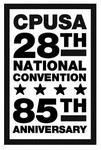
There are some things we can say for certain happened in Ohio and the U.S. in November, 2004. One, as everyone knows, Ohios electoral votes handed George W. Bush the number necessary to clinch the electoral college vote and secure a second term as president of the United States. Two, the election didnt pass the smell test. That is, there were so many flaws in the election process from registration through recount that many have concluded that democracy lost in Ohio.
Vote suppression was most frequent in communities of color, where the longest lines occurred and the greatest number of machines malfunctioned.
The lack of uniform national and statewide standards for how we conduct elections became grossly apparent throughout the state. Three, the need for electoral reform in Ohio and elsewhere is both urgent and compelling, so that future elections will be honest and secure, and the outcome will without doubt reflect the will of the voters.
Four, the labor movement conducted its most extensive effort in history to influence its members and their families to vote and to vote for the democratic candidate. The results were impressive. Official figures from the AFL-CIO state that 65% of voters from union households voted for John Kerry, compared to 49% of the rest of the electorate. Had the rest of the country followed labors lead, the outcome of the election would have been different.
Fifth, in Ohio, questions like the constitutional amendment banning same sex marriage and the abortion issue played a larger than expected role in the elections. Sixth, in Ohio like elsewhere, fear and the aftermath of 9/11 were played on by the Bush camp and had an influence on voters that overshadowed the loss of hundreds of thousands of jobs and the economic decline suffered in Ohio.
Seventh, the labor movement, ACT, Move-On and others tried to substitute for a poorly organized and ineffective Democratic Party. It appears that the traditional base of the Democratic Party among working people, minorities and large urban areas has eroded.
Finally, we can say for certain that, for the overwhelmingly majority of activists, the elections are over. Many people are now involved in other urgent struggles some to prevent privatization of Social Security, some in election reform efforts, some in the struggle for health care and pension rights, some in the fight for quality education and the state budget crisis in Ohio. While doubts linger about the honesty of the outcome, few persist in arguing that the elections should be overturned and conducted again. Political realities are such that most activists agree this will not happen.
What we cannot say for certain, yet, is what really happened in Ohio, and we may never be able to. That is, we dont know how many people registered to vote properly and in good faith but were never entered onto the voting rolls, or were entered incorrectly
We know that many people became discouraged or had other responsibilities and had to leave long lines, after standing and waiting for hours to vote, but we dont know how many. We know some ballots were already marked for Bush before voters got them; and that some Kerry supporters voted on these ballots for Kerry and their ballots were then rejected as overvotes. We know some votes cast on touch screen machines hopped over to Bush after the voter voted for Kerry, but, again, we cant say how many. We dont know how many African American and Latino voters stayed away from the polls because of intimidating rumors of the possibility of arrest or deportation. We dont know how many people were misdirected by poll workers to the wrong polling location, and then had their votes thrown out because of a ruling by Ohios very partisan Secretary of State Kenneth Blackwell. We dont know how many vote counts were manipulated and how many votes were stolen. What we can say is that all of these things happened, and thousands of Kerry votes were lost in Ohio. How many will probably never be known for sure.
What we also cannot say for certain is that the reforms necessary to protect democracy in Ohio and elsewhere will happen. The call for reform has been issued by the heroic Congressional Representatives Stephanie Tubbs Jones of Ohio and Michigans John Conyers. Conyers has issued a statement of reforms that he will fight for at the federal level. (For his complete report on the elections and the reforms he has singled out for attention, see his web site at .) If won, these reforms will go a long way toward improving the democratic process. Statewide and local reforms are needed as well. Many organizations and individuals have begun the process of identifying what reforms are needed and what it will take to win them. This is a vital process, and needs to be completed as speedily as possible so that 2006 and 2008 are not repeats of the debacle that happened in 2004 in Ohio and many other states.
Educational Papers Series A Communist Party Education Commission project for the pre-convention discussion period leading to the CPUSA 28th National Convention July 13, 2005, Chicago Illinois


 Join Now
Join Now